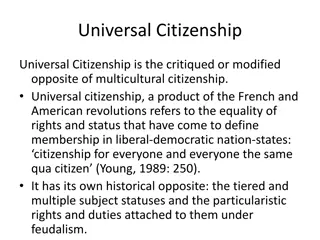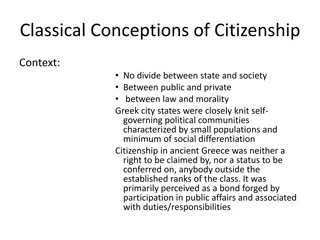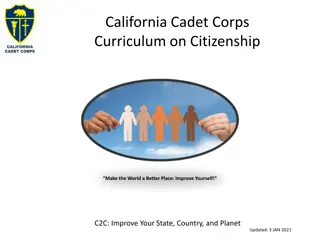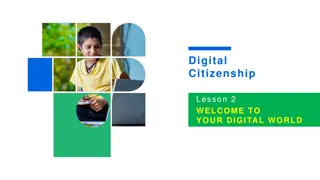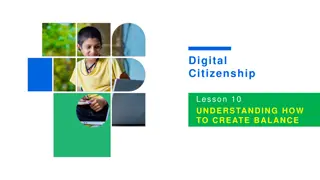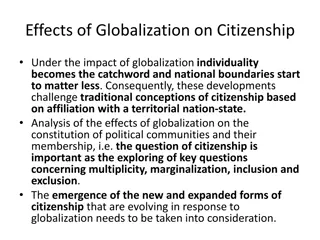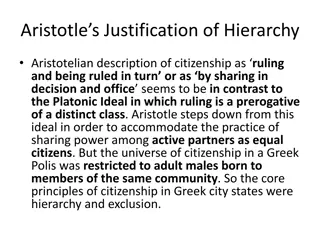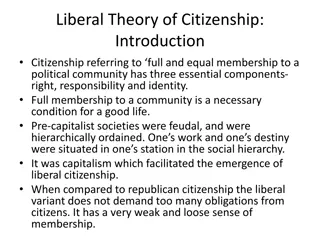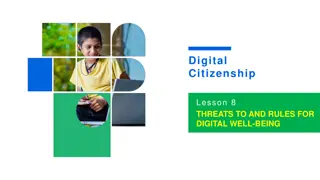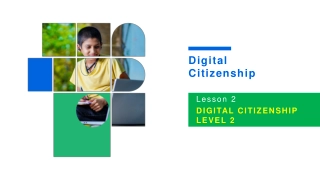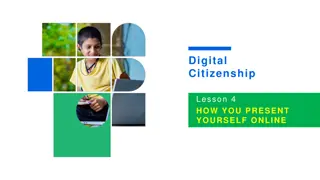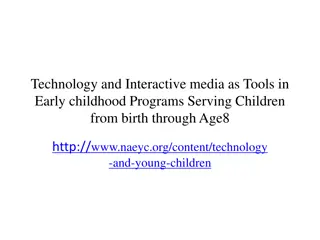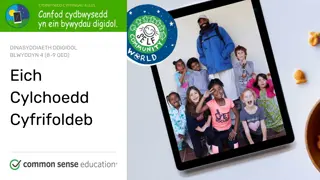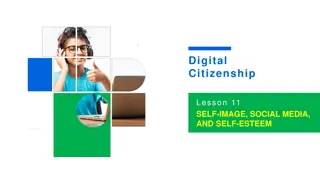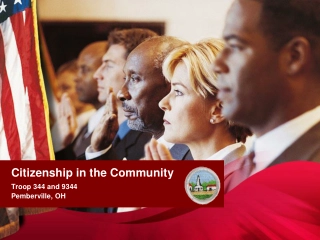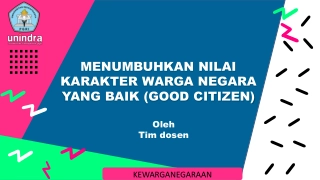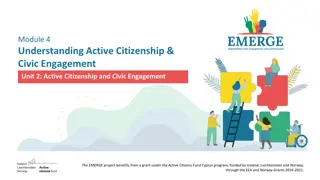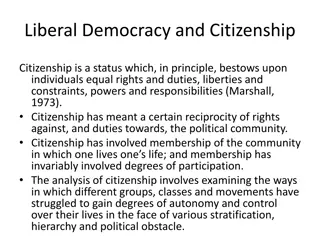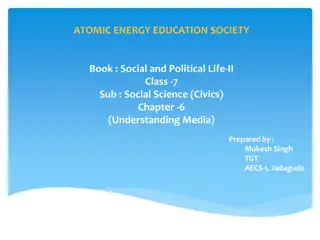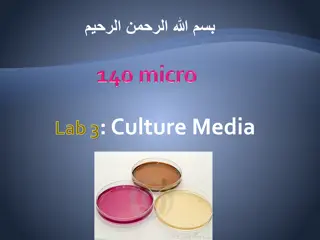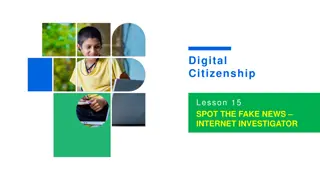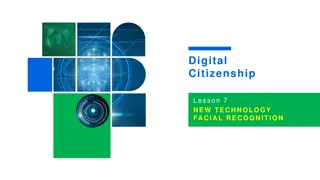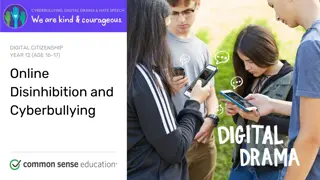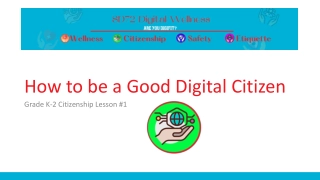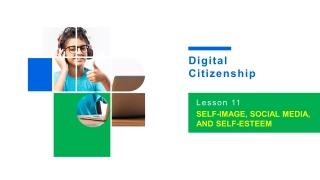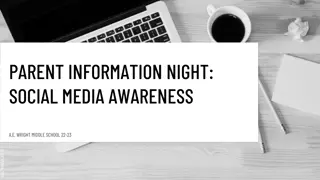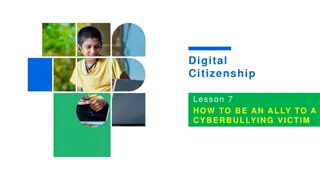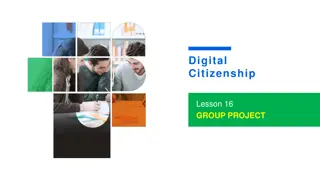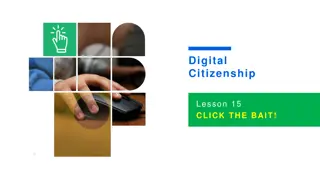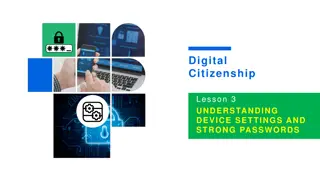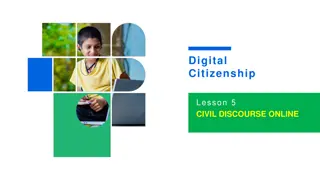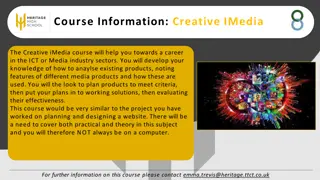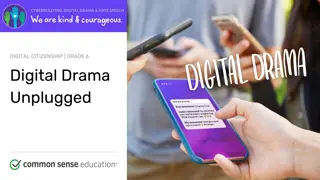Exploring Digital Citizenship: Finding Media Balance in Year 6
Dive into a digital citizenship curriculum for Year 6 students (ages 10-11) focused on understanding and achieving a healthy media balance. The resources provided encourage reflection, discussion, and the creation of personalized plans for balanced media use. Students engage in activities like imagining their perfect day, discussing potential changes over seven days, observing and discussing images, exploring key vocabulary such as "balance."
Download Presentation

Please find below an Image/Link to download the presentation.
The content on the website is provided AS IS for your information and personal use only. It may not be sold, licensed, or shared on other websites without obtaining consent from the author. Download presentation by click this link. If you encounter any issues during the download, it is possible that the publisher has removed the file from their server.
E N D
Presentation Transcript
DIGITAL CITIZENSHIP YEAR 6 (AGE 10-11) Finding My Media Balance commonsense.org/education/uk/digital-citizenship/resources Shareable with attribution for noncommercial use. Remixing is permitted.
Essential Question What does media balance mean for me? What does media balance mean for me? commonsense.org/education/uk/digital-citizenship/resources Shareable with attribution for noncommercial use. Remixing is permitted.
Learning Objectives ll Reflect on how balanced they are in their daily lives. 2 2 Consider what "media balance" means and how it applies to them. Create a personalised plan for healthy and balanced media use. 3 3 commonsense.org/education/uk/digital-citizenship/resources Shareable with attribution for noncommercial use. Remixing is permitted.
WARM UP: MY PERFECT DAY My Perfect Day: Directions If you could plan your perfect day -- where you could do anything you wanted -- what would it include? Write a short reflection on your handout describing what you would do. Include as much detail as you can. commonsense.org/education/uk/digital-citizenship/resources Shareable with attribution for noncommercial use. Remixing is permitted.
THINK, PAIR, SHARE Now imagine that your perfect day will be granted for seven straight days. Would you change anything in your perfect day? If so, what? Directions: 1. Take a moment to think silently about these questions. 2. Then take turns sharing your responses with your partner. commonsense.org/education/uk/digital-citizenship/resources Shareable with attribution for noncommercial use. Remixing is permitted.
OBSERVE + DISCUSS What do you think of when you see these images? What do they show? Directions: Take a moment to think silently about the question, then take turns sharing your responses with your partner. commonsense.org/education/uk/digital-citizenship/resources Shareable with attribution for noncommercial use. Remixing is permitted.
KEY VOCABULARY Balance All of the parts are in the correct -- though not necessarily equal -- proportions commonsense.org/education/uk/digital-citizenship/resources Shareable with attribution for noncommercial use. Remixing is permitted.
KEY VOCABULARY Media All of the ways that large groups of people get and share information (TV, books, internet, newspapers, phones, etc.) commonsense.org/education/uk/digital-citizenship/resources Shareable with attribution for noncommercial use. Remixing is permitted.
WATCH + DISCUSS My Media Balance Looking for a lesson plan on this topic? Visit https://www.commonsense.org/education/digital-citizenship/lesson/finding-my-media-balance Every day, we make choices about the media we consume and create. But do kids actually understand what makes their media choices healthy or not? Hint: It s about a lot more than just screen time. Use this video to give your students a framework for making informed media choices, and to help them find media balance in their lives. Discuss: According to the video, what is media balance? To watch this video on the Common Sense Education site, click here. commonsense.org/education/uk/digital-citizenship/resources Shareable with attribution for noncommercial use. Remixing is permitted.
What makes a healthy media choice? What? When? How much? What kinds of media are you consuming (or creating)? When are you consuming (or creating) the media? How much media are you consuming? How long are you spending with the media at one time? What platforms are you using to consume the media (i.e. a streaming platform like Netflix)? What time of day? What day of the week? How often are you consuming the media? What else is happening at this time (i.e. is it during dinnertime, right before bed, etc.)? or What device(s) are you using to consume (or create) the media? commonsense.org/education/uk/digital-citizenship/resources Shareable with attribution for noncommercial use. Remixing is permitted.
KEY VOCABULARY Media Balance Using media in a way that feels healthy and in balance with other life activities (family, friends, school, hobbies, etc.) commonsense.org/education/uk/digital-citizenship/resources Shareable with attribution for noncommercial use. Remixing is permitted.
ACTIVITY: MY MEDIA BALANCE My Media Plan: Directions Think about which media and non-media choices help you feel healthy and balanced. Then, use the chart to plan out your perfect day. For each choice, fill in the What?, When? and How Much? columns. You can include more than one activity in each row -- just draw in the lines yourself! commonsense.org/education/uk/digital-citizenship/resources Shareable with attribution for noncommercial use. Remixing is permitted.
commonsense.org/education/uk/digital-citizenship/resources Shareable with attribution for noncommercial use. Remixing is permitted.


